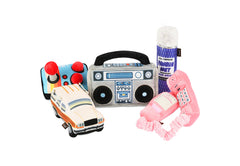Walking a dog is easy right? You just clip on a lead and go. Well, this isn’t always the case. Many dogs require a lot of training before they can walk well on the lead. There are also other dangers that you need to be aware of when walking your pet. We’ve compiled 10 dog walking tips that everyone should know before going on those all-important walkies. These will keep both you and your bet safe and happy, the way that walking a dog should be.
1. Choose the right leash
It’s important for you to choose the right leash for your pet. Especially with puppies, or dogs that haven’t been leash trained correctly, you need a leash that is going to control them, without harming them in the process. If you are wondering how to walk a dog that pulls, using a front clip harness is part of the answer. This naturally pulls them back to you. If you are tugging directly on a collar, a dog will automatically pull against it the other way. This is why choke chains or prong collars are never advised. Your dog will never learn what it is that you want it to do if you are using one of these, and you can really hurt them.
2. Extendable Leads Yes or No?
An extendable lead is a great way for your dog to roam about, while still being firmly in your control. If your dog is well trained, then it might be a good idea to invest in one. They are not suitable for crowded places, as the lead is just asking to get tangled, but are great for parks and areas where you are unlikely to meet someone else. Extendable leads are also a great way to train your dog to ‘return’ in an environment outside of your home, without having to take them off leash. However, if you know that you are going to be somewhere with other dogs, with distractions for your pet, leave the extendable lead at home. They are only suitable for dogs who are well trained, not for dogs who already pull.
3. Give yourself plenty of time
A dog walk shouldn’t be a ten-minute jaunt, waiting for your dog to do its business. You need to give yourself and your pooch time to relax into it, particularly if you are still training them. Not only will this allow your pet to get used to the area, but it will get them used to walking alongside you and staying calm. Most dogs prefer a morning walk, when they are just out of bed and not too excitable. The weather is also cooler in the morning, which is much preferable.

4. Hire a dog walker
If you don’t have the time for long walks, you should consider getting a dog walker. Not only will they give your pet the exercise that they need, but they can also leash train your pet while they do so. This means that when you do go out with your pet, they won’t be over-exited, and will behave better. You can walk your dog for shorter lengths of time if you know that you have a dog walker coming in to take care of the rest.
5. Bring Treats
If you are leash training your dog yourself, make sure that you bring treats that they love. A great walking tip is to get small treats that are designed for training, as these are lower in calorie. You shouldn’t reward your dog with a treat all of the time, and more frequently at the start of their training, lowering the frequency as they become more and more obedient. Practice sitting at crosswalks, getting them to return to you, and walking beside you.

6. Don’t reward bad behavior
Remember that treats aren’t the only way that you can praise your dog. Playing with them, encouraging them, and petting them are all forms of reward. Make sure when you are training that you don’t accidentally use one of these methods to reward bad behavior. Not only will this ruin any training that you’ve done, but it will also confuse your pet if their pack leader later tells them off for something that to their mind, they had been rewarded for in the past. Be aware of what you are doing and saying, and your dog will be leash trained in no time.
7. Don’t forget the water
Your pet will get thirsty during its walk, just like humans do. Bringing a healthy supply of H2O is a must for your dogs safety. Dogs become dehydrated very easily through panting during a hot day, and so will need a refresh. Many dogs can just drink out of a bottle, but you can also purchase collapsible bowls to bring along with you. Your dog will thank you for it.
8. Watch out for hot weather
Hot weather can be dangerous for your pets, so it is always important to be aware of your dog’s safety. A hot pavement can severely damage a dog’s paws, causing the pads to burn and blister. During the hot weather, you shouldn’t walk your dog in the middle of the day. Stick to early morning and late evening when it is cooler. If can’t do this, stick to walking them on the grass or woods. Another alternative is putting booties on your dog, but many pets don’t like these.

9. Identification
Make sure that your dog has its id on its collar. There are so many cases of a dog slipping their leash that it is super important that your dog is also microchipped so that it can be identified if this ever happens. If you are walking your dog at night, reflective gear is a must. It is so difficult for cars to see during dusk without it, so if you’re wearing some yourself, make sure that your dog is too. This can either be a coat, or a leash and harness.
10. Scoop the poop
No one likes it, but it needs to be done. Not only to keep walking areas a pleasant place for everyone, but also for your dogs, and other dog’s health. Worm eggs can live for weeks in a dog’s poo, and no one wants their dogs to get them. Runoff into local ponds can also damage the environment and our rivers aren’t meant to cope with the sheer amount of it in a concentrated area. This can potentially destroy all your favorite walking spots. So, do the right thing, and bring plenty of poo bags.





